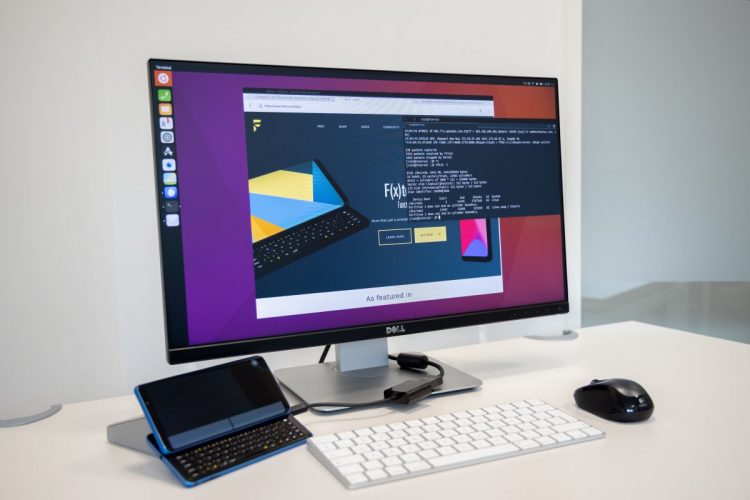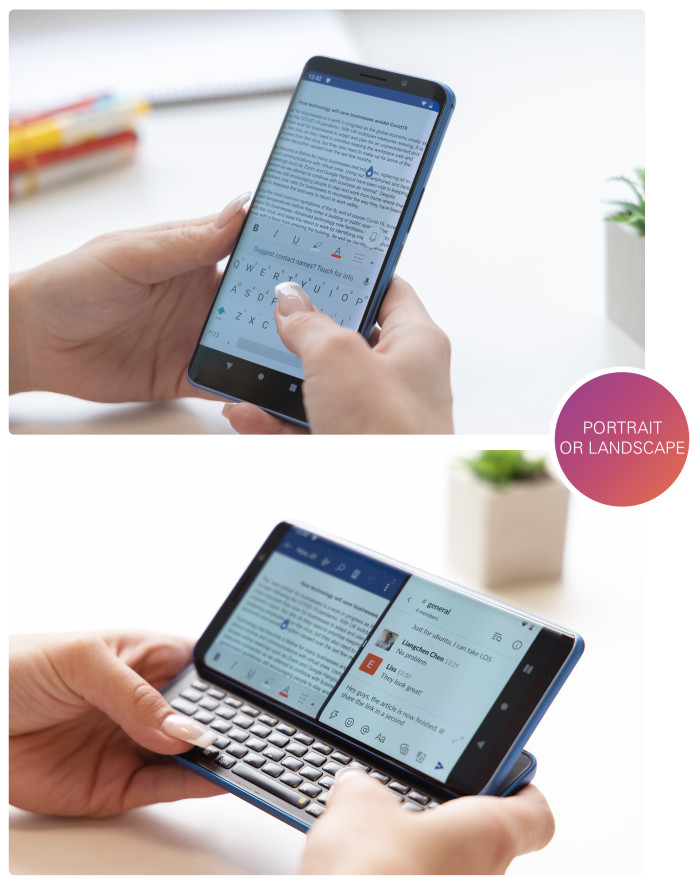
Some gadget manufacturers are trying to get away from the concept of a touchscreen smartphone without a physical keyboard, which are very similar to each other. Until recently, the most famous manufacturer of physical keyboard devices was RIM, the manufacturer of Blackberry smartphones.
There are other less well-known companies. One of them is F (x) tec. Now she introduced the device F (x) tec Pro1, which, in general, can hardly be called a phone. Rather, it is one of the latest representatives of the UMPC form factor. Although, perhaps, this phone will become popular and other manufacturers will pay attention to it. In the meantime, let's evaluate what's inside and outside.
What's good?
One of the main points: the phone allows you to work both in the Ubuntu Touch environment (which, by the way, Canonical refused, so it is not clear yet whether this is a good option or not) and LineageOS.

Specifications
- The hardware keyboard is quite comfortable in appearance. It has 66 buttons located on 5 rows.
- The screen is an AMOLED touchscreen with a diagonal of 5.99 inches and a resolution of 2160 x 1080. The display is covered with the fourth generation of Gorilla Glass.
- Communication modules - WiFi 5, Bluetooth 5.0, NFC.
- Ports - USB-C with HDMI support.
- Cameras - 12 MP and 5 MP - rear, plus 8 MP - front.
- Fingerprint sensor on one side.
- Battery - 2300 mAh, with support for Qualcomm Quick Charge 3.0.
- There are two slots for two SIM. They can be used to install a SIM and microSD card.
- Processor - Qualcomm Snapdragon 835 (it was released back in 2016).
Let's take a closer look at the keyboard. The form factor of the device is a slider. When closed, the phone looks like an ordinary "shovel" with a diagonal of 6 inches. But the upper part with the screen can slide and rise, giving access to the keyboard. The latter is equipped with a backlight so that you can work normally in the dark.

What about the OS?
In order to create a smartphone capable of running Lineage OS and Ubuntu Touch, the company has teamed up with the xda-developers community. As far as you can tell, there are two different versions of smartphones. The first is with Ubuntu Touch, the second is with LineageOS. As mentioned above, Canonical, the developer of Ubuntu, refused to continue working with OS Ubuntu Touch, because it did not complete the development of the Ubuntu Edge phone.
But there was a group of developers who picked up the baton of Ubuntu Touch and brought it to normal. The group is called UBPorts .
Users who have tried this OS claim that it is one of the most advanced Linux distributions for a smartphone, there are no problems with it. However, some solutions are quite interesting - for example, the root file system is read-only by default.
This OS uses the Lomiri user interface, which is based on the Ubuntu Unity environment. The user has access to gesture control, the center of installation / removal of programs and, most importantly, it is possible to connect the phone to the display. When an external screen is connected, the interface adapts to the "adult" desktop, so that the user actually gets a workstation. In this case, the smartphone screen can be used as a trackpad.
When the work is completed, the device can be disconnected from the screen and used as a phone. If you close the slider, it will be a completely normal form factor.
A few words about LineageOS. It is a custom OS based on Android Open Source Project code . It includes root access and additional options that make it possible to configure personal data protection and customization. This operating system was built on the CyanogenMod code base.
On the screen, you can run two applications at once, which will share the workspace. The phone is also compatible with Android applications, which can be launched using Libertine. The developers have provided the ability to configure the device so that it can work with both Ubuntu Touch OS and Android OS.

And what's the price?
There are some difficulties here - you cannot order a phone right now. Despite the existence of several final versions of prototypes (they can be seen in the photo), the developers of the device are raising funds on Indiegogo.

The pre-order price is as follows:
- Pro1-X Super Early Bird with 8GB RAM, 256GB will cost $ 499 - devices at this price will get 50 first depositors.
- Pro1-X Super Early Bird with 6GB RAM, 128GB for $ 649 - 2,000 contributors
- Pro1-X Super Early Bird with 8GB RAM, 256GB for $ 719 - 2,000 contributors.
By the way, 8/256 GB is a new option, since the original Pro1 was only available in a version with 6 GB of RAM and 128 GB of file space.
The phone will be available from March next year. Most likely, the project will be implemented, since initially the developers planned to raise about € 63,000. But € 185,942 has already been raised, which is 291% higher than the plan. And until the end of the campaign, 45 more days.
According to the developers, they created the device in order to provide users with the ability to change everything that is necessary at their discretion. The same Android requires a procedure for obtaining root access so that you can change the parameters and customize the behavior of the operating system. The new phone provides a high level of customization right away.
Overall, this phone is an attempt to revive the UMPC format, and a good one. Perhaps the phone will find its buyer among the geeks. In the end, the modular Linux-smartphone PinePhone found its users . True, it costs a little less - about $ 200, and the range of software offers an even wider: Postmarket OS with KDE Plasma Mobile, UBPorts (Ubuntu Touch), Maemo Leste, Manjaro, LuneOS, Nemo Mobile and Sailfish are available.
Be that as it may, the device that F (x) tec proposed is quite interesting. We will follow the development of the situation. By the way, in the near future we will publish an article about UMPCs of different years - of course, we will choose only the most interesting devices.
